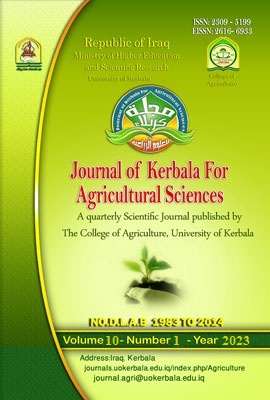Abstract
Bisphenol A (BPA) is determined as an organic material, with municipal and industrial wastewater being the primary sources of contamination with BPA in the environment. This study aimed to enhance understanding of BPA removal by investigating the biodeg-radation capacity of bacteria found in contaminated soil. Molecular detection of specific genes that may be responsible for biodegtion of BPA. So, 32 swabs were taken from polluted soils from different areas in Kerbala province/ Iraq. These isolates were subjected to examine their ability to degrade bisphenol by using MSM with BPA as the sole carbon source for bacterial growth. By using a specific primer for the Cytochrome C gene (bisAB operon), the detection of this gene was done, and the current study found that, out of 20 isolates that could grow on the media containing BPA as a sole carbon source15 isolates harbouring this gene that suggested de-graded BPA. The current study concluded that using local isolates of bacteria isolated from polluted soils could effectively remediate BPA from the media containing it as only a carbon source. The operon of the bisAB gene is detected in most isolates, and this gene is suggested to be involved in BPA degradation.
Keywords
bisAB
BPA
BPA-degrading bacteria
environment pollu-tion
operon
water pollution
